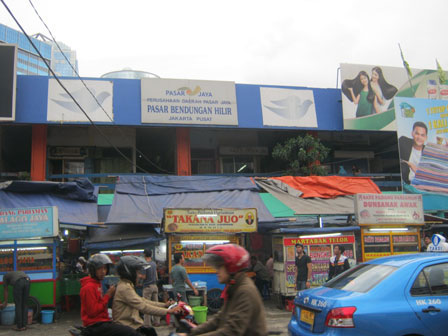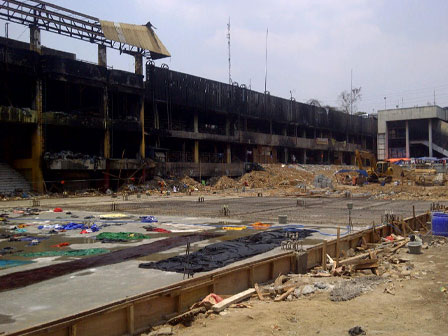The Construction of Five Traditional Markets Hampered
Reported by Andry | Translated by Rini Elvira
The construction of five traditional markets, which have been inaugurated by Jakarta Governor Joko Widodo last year, is confirmed behind schedule because of some factors. One of those factors is the lawsuit filed by Benhil Kavling 36 Market management and addressed to PD Pasar Jaya.
At this time, there is only one (traditional) market (construction) running, which is the Manggis Market
President Director of PD Pasar Jaya, Djangga Lubis, said the construction of traditional market currently running is the Manggis Market in Setiabudi, South Jakarta. The process has reached finishing phase before entering the traders to the market.
“At this time, there is only one (traditional) market (construction) running, which is the Manggis Market. It’s in finishing phase and we only need to put the traders inside the market,” he stated, Wednesday (9/17).
CCTV Installed in Traditional Markets for SecurityAbout the construction of the remaining four traditional markets aside Manggis Market, Lubis informed that the construction of Pesanggrahan Market has reached second floor and Kebon Bawang Market is in foundation making process. For Nangka Bungur Market, the market’s old building has just been demolished and the traders are currently being relocated.
“While for the Kampung Duri Market, its construction is hampered because the market is affected by the plan of road widening project. Thus, its (construction) permit is not issued,” he explained.
Lubis admitted that PD Pasar Jaya is catching up the delay of the construction of those five traditional markets. Moreover, there are many traders who have traded too long in the relocation places.
“Indeed, we should catch up this delay. Poor the traders who have been in relocation places for a long time,” he expressed.
According to Lubis, traditional markets are built to accommodate street vendors so the environment would be more orderly and organized. As for the amount of traders accommodated in those five traditional markets, it is varied.
“It is varied. In Manggis Market there are about 380 traders. All street vendors in the neighborhood are also accommodated there, so the environment is in order,” he told.
Especially for Manggis Market, the traditional market is targeted to operate at the end of this month or early next month at the latest.
“The traders (in relocation place) are scheduled to be moved (to the new market) at the end of this month or early next month,” he said.





